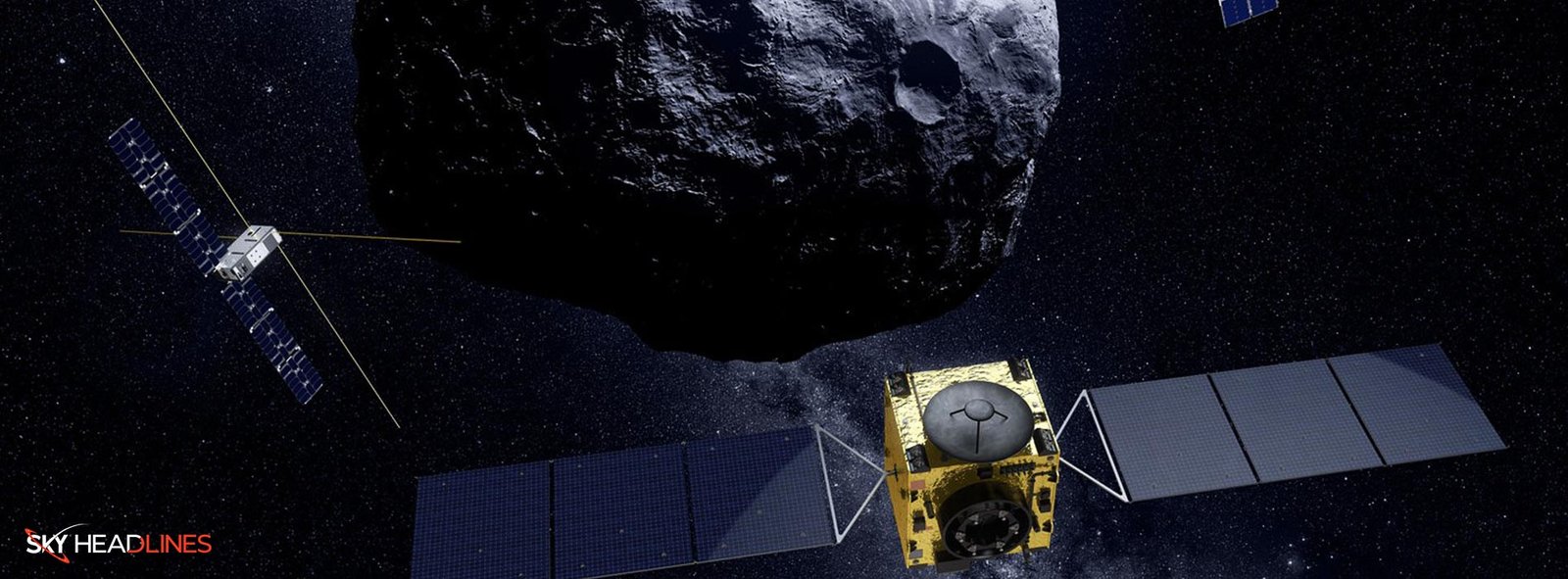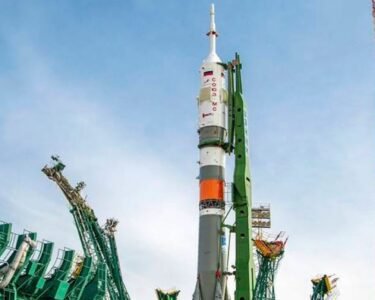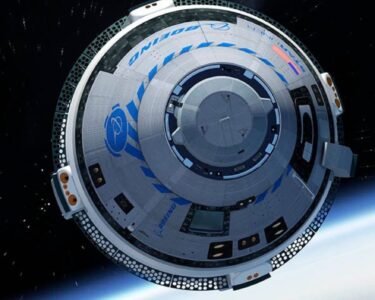The European Space Agency (ESA) has announced its upcoming Hera mission. The mission aims to follow up on the success of NASA’s DART mission. On September 26, 2022, the NASA DART team changed the orbit of an asteroid named Dimorphos. They did this using the DART spacecraft through a kinetic impact. This marked a significant milestone in asteroid deflection technology. NASA confirmed that the mission impact changed the asteroid’s motion in space. Debris blasted from the surface of Dimorphos was observed by NASA’s Hubble Space Telescope on October 8, 2022. ESA Hera mission aims to measure the impact of the DART mission on Dimorphos, enabling scientists to better understand how to protect Earth from potentially harmful asteroids. Additionally, it will help advocate for more planetary defense missions in the future.
Before we go any further, we should know,
Hera Mission Overview:
The Hera mission has a budget of €6 billion. The launch will be on October 2024 and will use an Ariane 6.4 launcher, with a Falcon 9 launcher as a backup. The spacecraft will perform a deep-space maneuver 2-3 weeks after launch. It will then fly by Mars in March 2025 at an altitude of 5000-8000 km before heading towards Didymos. There is also the possibility of an asteroid flyby during the cruise phase. Upon arrival at Didymos, Hera will also perform a capture sequence consisting of five maneuvers. This is expected to occur in January or early February 2027, with backup opportunities available in 2025 and also 2026. The arrival at Didymos will result in late 2030 or early 2031.
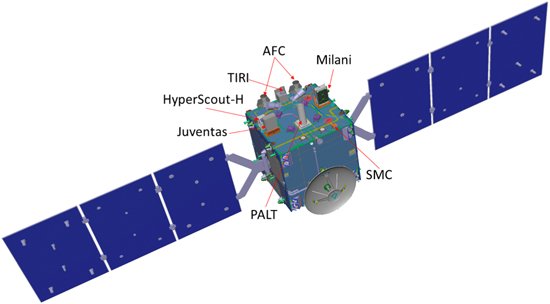
Five phases:
The Hera mission will consist of five phases after it reaches Didymos. The first phase is the Early Characterization Phase, which will take six weeks and focus on determining the global shape, mass/gravity, thermal, and dynamical properties of both asteroids. The next phase is the Payload Deployment Phase, which will center on releasing the two CubeSats and supporting their early operations.
Moreover, the Detailed Characterization Phase comes first and lasts four weeks. In this phase, Hera and its CubeSats will map asteroids at a meter-scale and determine their thermal, spectral, and interior properties through measurements.
The fourth phase is the Close Observation Phase, which lasts six weeks. This phase allows for high-resolution investigations of a large fraction of the surface area of Dimorphos, including the DART impact crater. This will be accomplished through 12 close flybys, with a pericenter distance of 4 km. The final phase is the Experimental Phase, which lasts six weeks. This phase will demonstrate innovative navigation techniques to achieve flybys at lower altitudes, down to 1 km or less. The goal is to enhance the resolution of Dimorphos’ morphological, spectral, and thermal properties, specifically in selected targets such as the DART impact crater, to the level of decimeters.
The Hera spacecraft will land on Didymos, providing high-resolution data on the primary in the process, marking the end of the mission.

Now, let’s find out the,
What are the objectives of the Hera mission?
The European Space Agency’s (ESA) Space Safety Program is developing the Hera mission, scheduled for launch in October 2024, with the primary goal of exploring a binary asteroid starting in December 2026, as part of a planetary defense mission. The Hera mission will provide valuable insights into asteroid science. Moreover, it will help in improving our understanding of the asteroid impact threat mitigation, mining, and scientific purposes. It aims to investigate the subsurface and also interior properties of the binary asteroid and measure the outcome of a kinetic impactor test, which will provide valuable information for asteroid impact threat mitigation, mining, and scientific purposes. The Hera mission is based on the previous Asteroid Impact Mission (AIM) concept and will contribute substantially to asteroid science.
Hera will characterize the first binary near-Earth asteroid. It will constrain the surface structure and regolith mobility on both Didymos and Dimorphos. This mission offers a unique opportunity to study the surface geophysics of two objects of different sizes and surface gravity. Regarding the deflection demonstration, Hera has several goals. These include determining Dimorphos’ mass to assess the momentum transfer efficiency from DART’s impact. It also involves studying the resulting crater to enhance our knowledge of the cratering mechanism. Additionally, Hera will examine both the exterior and interior of Dimorphos to enable scaling of the momentum transfer efficiency to other asteroids.
So, now let’s dig into the construction and features of,
Hera Spacecraft:
The Hera spacecraft is set to be equipped with advanced technology that will enable it to navigate safely through the double-asteroid system. Moreover, the spacecraft will utilize automated guidance, navigation, and control systems, which function like self-driving cars. The body of the spacecraft will be desk-sized and house a variety of instruments, including an optical Asteroid Framing Camera. Additionally, it will have thermal and spectral imagers, as well as a laser altimeter that will aid in surface mapping.
The Hera spacecraft consists of three spacecraft, which includes two CubeSats that are as small as shoeboxes, and will be transported near Dimorphos. One of the CubeSats, called Juventas, will carry out an extraordinary radar investigation of the asteroid’s internal structure. Juventas will also have instruments like a gravimeter and an accelerometer to measure the asteroid’s weak gravitational pull and its response to outside forces. Milani, the second CubeSat, will perform near-infrared spectral imaging and collect dust samples from asteroids. Through an innovative inter-satellite link system, the CubeSat duo will maintain communication with both their Hera mother craft and each other. This arrangement will provide valuable insights into managing multiple spacecraft in the unusual near-weightless environment. Ultimately, the CubeSats will land on Dimorphos.
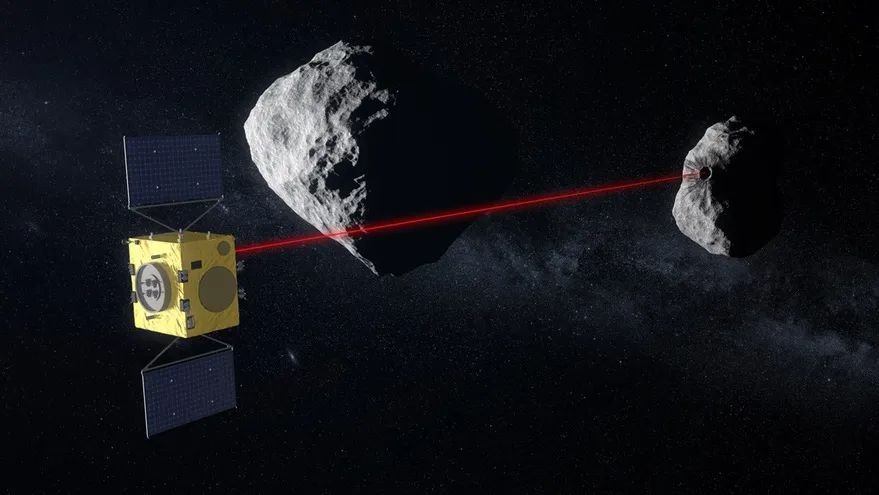
The Hera mission will provide significant knowledge about the makeup and arrangement of the binary asteroid system. With these advanced features, scientists hope to better understand how to defend against potentially hazardous asteroids.
So let’s sum up the whole mission in a short,
Conclusion:
On the whole, ESA’s Hera mission is a crucial step in better understanding how to protect Earth from potentially harmful asteroids. In October 2024, the mission will explore a binary asteroid and measure the impact of NASA’s DART mission. The spacecraft’s advanced technology will allow scientists to study the binary asteroid’s subsurface and interior properties. Additionally, the mission will perform the first comprehensive characterization of a binary near-Earth asteroid, which will contribute substantially to asteroid science.


